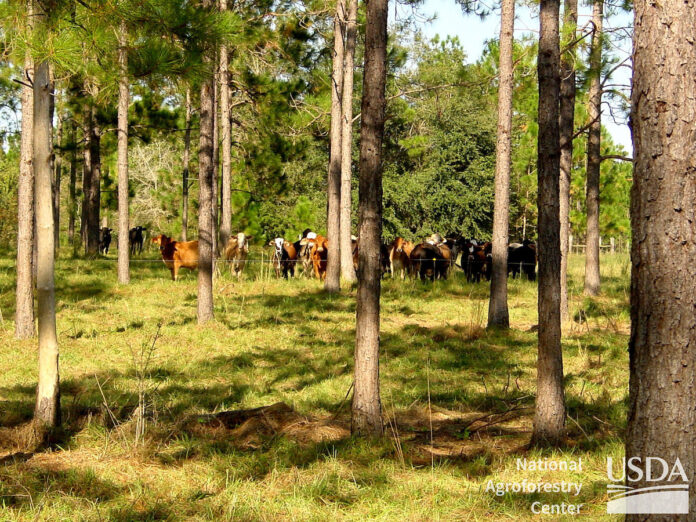Soon the U.S. Department of Agriculture will have the most detailed information it’s ever had on how agroforestry is being practiced across the country. Data collection for the first national agroforestry survey ends April 5.
“We will have the largest agroforestry dataset that exists,” said Matthew Smith, research program lead with USDA’s National Agroforestry Center. “We think we can help inform policy and, more importantly, help inform producers.”
New information
Agroforestry is defined as the deliberate integration of trees into crop or animal systems. Until the 2017 Census of Agriculture, the USDA didn’t even have a grasp on how many farmers were using one of the five main agroforestry practices: windbreaks, silvopasture, riparian buffer forests, alley cropping and forest farming.
All of that changed when the census that year asked one simple agroforestry question: do you practice agroforestry?
Census results showed 31,000 producers nationwide are practicing agroforestry. Smith said that number is likely higher, but it gave them a good place to start in conducting a follow-up survey to ask more specific questions.
The national agroforestry survey is being conducted by the National Agroforestry Center, or NAC, with help from the National Agricultural Statistics Service. The NAC works in partnership with the Natural Resources Conservation Service and Forest Service to conduct research
The NASS sent surveys in February to 350 farmers in Ohio, 373 farmers in Pennsylvania and 223 in West Virginia, said Cheryl Turner, state statistician of the USDA-NASS Ohio field office.
Smith said there have been regional surveys on agroforestry, but they typically don’t ask the same questions across the board. The national survey will ask uniform questions and allow researchers to compare things across practices and across regions.
Agroforestry practices vary widely across the country. Silvopasture, for example, is often used as a fuels management tool in the Pacific Northwest. But in the Northeast, they hear of people using it to help with animal heat stress during the peak of the summer, Smith said.
“It does differ by region why people are practicing,” he said. “The challenges and experiences vary by region … One of our philosophies is ‘the right tree in the right place.’ It all comes down to the goals and objectives of the farmer. I think by providing the data to them, it will be helpful.”
The NAC team will receive the compiled data from the survey in late summer, Smith said. The plan is to create a series of publications specific to each agroforestry practice and release them in January or February 2023.
(Reporter Rachel Wagoner can be contacted at 800-837-3419 or rachel@farmanddairy.com.)













Caring for forest plantations and the ecology of forests is an important task at the moment.
Investments in this industry have become the prerogative of many large companies that care about the environment.
EOS Forest Monitoring is a green platform that tracks illegal logging, fires, and natural disasters using satellite images